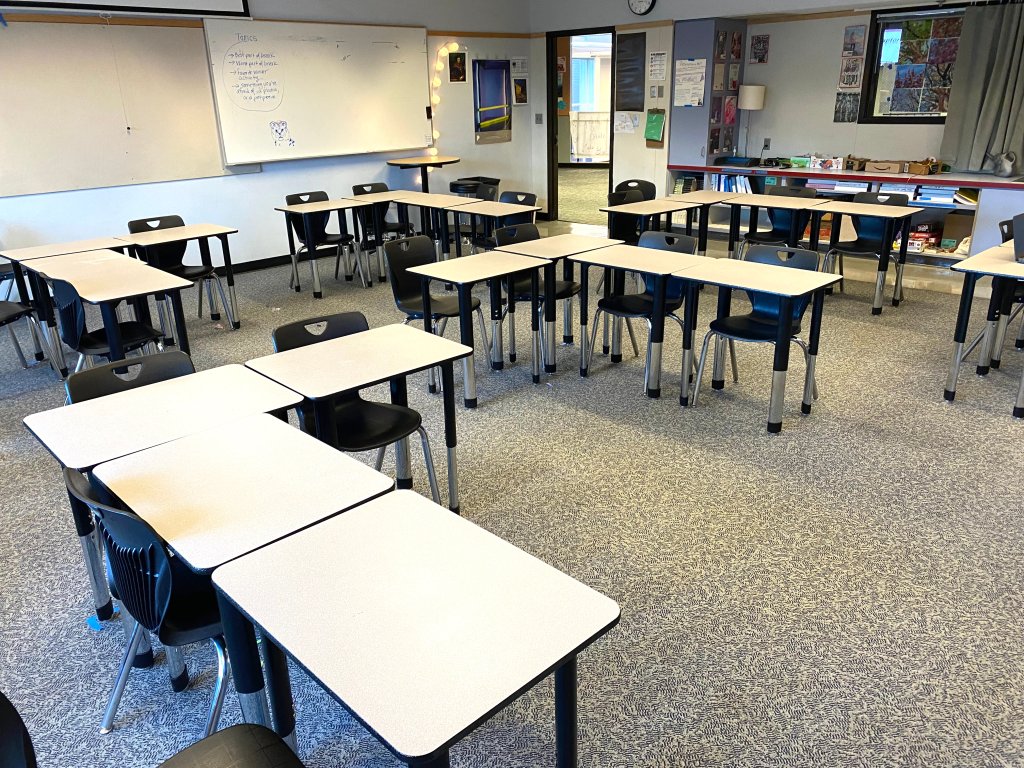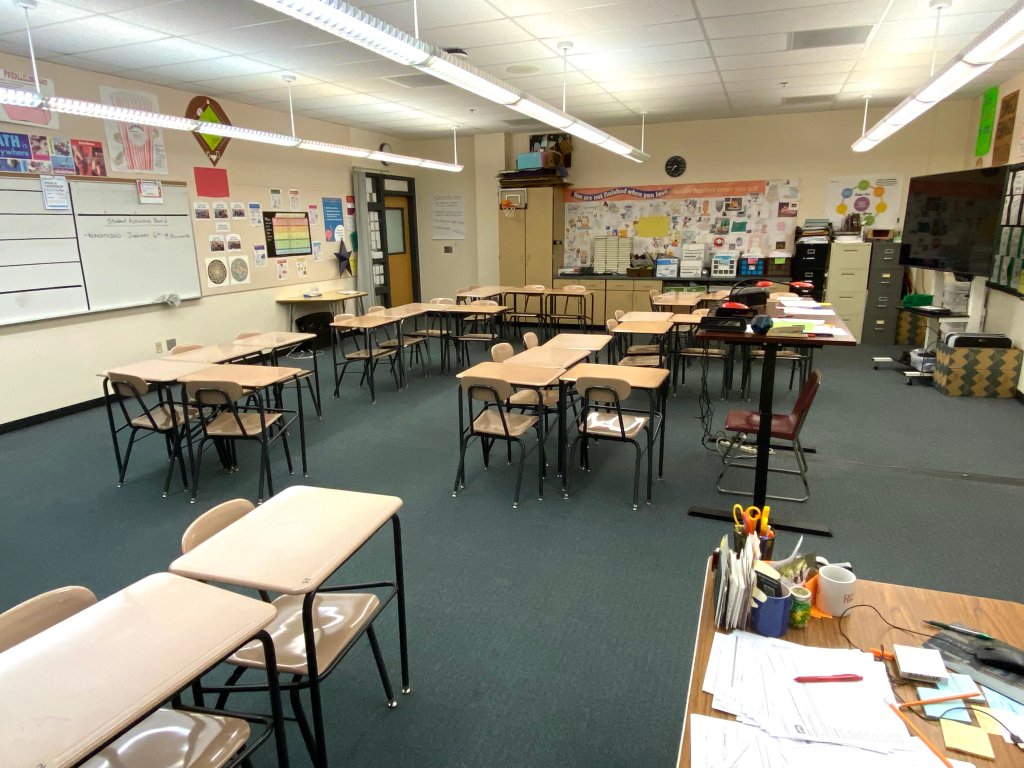A Desk Layout Alternative to Rows and Circles
Arranging desks in L-shaped groups has advantages for both the students and the teacher.
Ask any teacher, “What’s the best seating arrangement for learning?” and you’ll likely get, “It depends…,” and I’d agree. It does depend on what and how students are learning, how they’re interacting with each other and their teacher, the actual furniture and space available, and the variety of interpersonal skills students possess when they walk through the classroom door.
You’ve likely experienced or implemented a wide variety of seating arrangements in an educational setting, from chair desks or tables in rows, tables or chair desks in blocks, variations of U-shaped arrangements, or a myriad of others. Many of you may change your seating from day to day or even activity to activity. I’ve tried out most, if not all, of these, and some years ago I stumbled across a seating arrangement new to me that became my default setting. Some of you may already use this, but if you haven’t, you may want to try it—the seating L.
A Flexible Classroom Seating Design
In my science and statistics classroom, I had 18 two-person tables. When they were set up in rows, students could easily focus on something going on at the front of the room, but it was hard to work in groups and challenging for me to circulate among them. When they were set up in blocks, group work and collaboration was easier, but trying to focus on something being shared or presented at one part of the room was often a challenge for much of the class.
The L-shaped pairs of tables kept the advantages of both row and block arrangements, reduced their disadvantages, and even provided additional benefits.
With two-person tables, the L consists of one table’s end abutting another table’s front edge. It’s admittedly a bit clunkier to create an L with chair-desks, but I know several teachers in the district I work in that tried it following one of my workshops, and they made it work, too.

To get a visual of what this might look like, put your hands palm down on a flat surface in front of you; make an L with the thumb and index finger of both hands, curl the rest of your fingers into your palm, and lastly rotate your wrists so your index fingers are now pointing towards each other. Voila! You now have what the seating Ls would look like on each side of your classroom. (You can also check out a simple diagram I made.)
Group Work With L-Shaped Seating
With this layout, it’s pretty easy for your students to see the front of the room if there's any need for focus there and still easily converse with each other on collective or collaborative tasks. An added benefit is that you can stand in the space at the junction of the L and be adjacent to each student in that group—and unlike with blocks, you don’t have to talk over or through someone when you’re conversing with one of their L-mates.
For the last 10 or more years of my time in the classroom, the L was my primary setup, and when needed, it was easy to convert to rows for something like a more-spread-out assessment or into blocks for a game, project, or lab.
One other aspect I found helpful with the Ls was that I could create strategic heterogeneous groups at each L to provide peer supports and relatively equally strong collections of learners. By assigning similar skills and strengths at each location for each L, I could also easily shuffle groups for sharing and brainstorming or general cross-pollination of ideas. Students in one location would rotate one L clockwise, while students in another location would rotate one L counterclockwise, and instantly you have new groups with ideas from three groups to share.

When students returned to their original L, each group would now have information from as many as five groups. This is great with jigsaws, team quizzes, and other collaborative activities that you could also do in block seating.
The importance of carefully planned seating in classrooms can’t be overstated. It’s crucial that we as educators remember that the same level of thought and intentionality that goes into building relationships, lesson construction, and tools for assessment also goes into how we arrange our seating and our students within that seating. If we forget that, we won’t get the most out of our limited time and opportunities with them.
Teacher Endorsements
If you have the seating and the space, give seating Ls a try. I think you and your students might like and benefit from them. Some of my colleagues agree:
“This arrangement allows me to come alongside each student or the whole group with ease. It also has a ‘stadium style’ feel to it that is conducive for presentations given at the front of the room or a mock trial I recently conducted. It works well within my irregularly shaped classroom with large class sizes. Trying to find a configuration that allowed for group collaboration and fit the confines of the classroom was a struggle until I was directed to this arrangement.” —Regan Molatore, Leadership and Street Law, Wilsonville High School
“For 18 years I primarily taught in rows. I hesitated to seat my students in groups because I always had at least one student in each group who would have their back to me or the board. I do really like the L seating because every student has a good view of the board, the teacher, and their classmates for classroom discussions. I also really enjoy that I can stand in one spot and help the entire L at the same time, and there is also more space to move around in the classroom.” —Kaleb McKern, Math, West Linn High School
